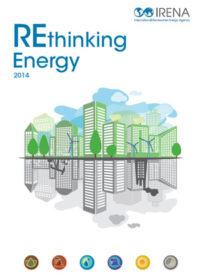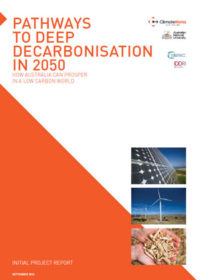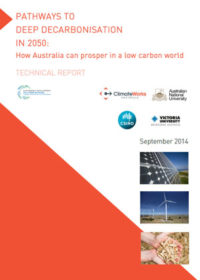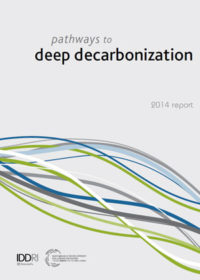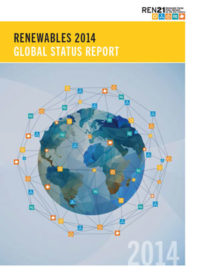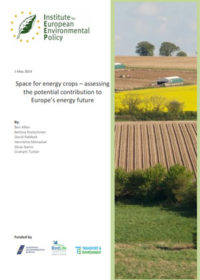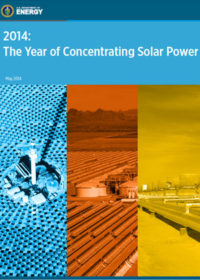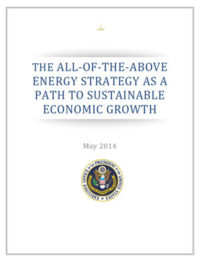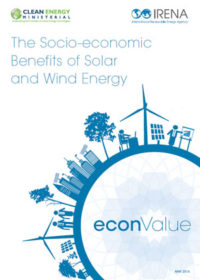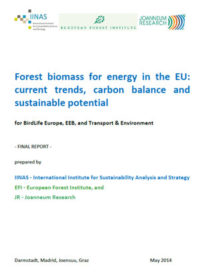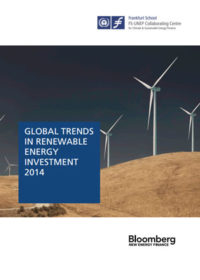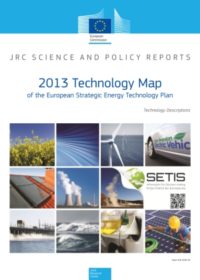Resources
Publications
Our publications, reports and research library hosts over 500 specialist reports and research papers on all topics associated with CCS.
View our Publication Library Disclaimer.
Filter by
REthinking energy: towards a new power system
28th September 2014
Topic(s): Project financing, Renewables
IRENA’s Rethinking Energy series explores the changes that are transforming the way energy is produced and used, and how this affects governments, businesses and individual citizens.
The first edition of REthinking Energy focuses on the power sector. It describes the trends driving this change, how the technology is evolving, who is financing it, and the wider benefits it will bring. Finally, it examines what an energy system powered by renewables might look like and how policy makers can further support the transformation.
Disclaimer
The content within the Global CCS Institute Publications, Reports and Research Library is provided for information purposes only. We make every effort and take reasonable care to keep the content of this section up-to-date and error-free. However, we make no claim as to its accuracy, currency or reliability.
Content and material featured within this section of our website includes reports and research published by third parties. The content and material may include opinions and recommendations of third parties that do not reflect those held by the Global CCS Institute.
Pathways to deep decarbonisation in 2050: how Australia can prosper in a low carbon world
23rd September 2014
Topic(s): Carbon capture use and storage (CCUS), Economics, Energy efficiency, Fuel switching, Nuclear energy, Renewables
Pathways to Deep Decarbonisation in 2050: How Australia Can Prosper in a Low Carbon World presents an illustrative deep decarbonisation pathway for Australia - just one of many possible pathways - developed using a combination of well-established modelling tools to identify feasible and least-cost options. The frame of reference for the analysis is that all countries decarbonise by 2050, consistent with the objective of limiting the increase in global mean surface temperature to 2°C in order to avoid dangerous climate change.
This initial project report shows that Australia can achieve net zero emissions by 2050 and live within its recommended carbon budget, using technologies that exist today (including carbon capture and storage), while maintaining economic prosperity. Major technological transitions are needed in some industries and many activities, but no fundamental change to Australia’s economy is required. Economic activity and Australian incomes keep rising. The economy grows by 150% to 2050, while net emissions fall to zero and energy sector emissions are reduced by more than four fifths.
This report is accompanied by the Technical Report which gives detail on assumptions, data, modelling tools and detailed results.
Disclaimer
The content within the Global CCS Institute Publications, Reports and Research Library is provided for information purposes only. We make every effort and take reasonable care to keep the content of this section up-to-date and error-free. However, we make no claim as to its accuracy, currency or reliability.
Content and material featured within this section of our website includes reports and research published by third parties. The content and material may include opinions and recommendations of third parties that do not reflect those held by the Global CCS Institute.
Pathways to deep decarbonisation in 2050: how Australia can prosper in a low carbon world. Technical report
23rd September 2014
Topic(s): Carbon capture use and storage (CCUS), Economics, Energy efficiency, Fuel switching, Nuclear energy, Renewables
This report presents the technical analysis supporting ClimateWorks’ Pathways to Deep Decarbonisation in 2050: How Australia Can Prosper in a Low Carbon World. It provides readers with details on assumptions, data, and modelling tools. This Technical Report provides detailed results and a discussion of limitations.
Disclaimer
The content within the Global CCS Institute Publications, Reports and Research Library is provided for information purposes only. We make every effort and take reasonable care to keep the content of this section up-to-date and error-free. However, we make no claim as to its accuracy, currency or reliability.
Content and material featured within this section of our website includes reports and research published by third parties. The content and material may include opinions and recommendations of third parties that do not reflect those held by the Global CCS Institute.
Pathways to deep decarbonization: 2014 report
19th September 2014
Topic(s): Carbon capture use and storage (CCUS), Economics, Energy efficiency, Fuel switching, Nuclear energy, Renewables
This 2014 report by the Deep Decarbonization Pathway Project (DDPP) summarises preliminary findings of the technical pathways developed by the DDPP Country Research Partners with the objective of achieving emission reductions consistent with limiting global warming to less than 2°C., without, at this stage, consideration of economic and social costs and benefits.
Disclaimer
The content within the Global CCS Institute Publications, Reports and Research Library is provided for information purposes only. We make every effort and take reasonable care to keep the content of this section up-to-date and error-free. However, we make no claim as to its accuracy, currency or reliability.
Content and material featured within this section of our website includes reports and research published by third parties. The content and material may include opinions and recommendations of third parties that do not reflect those held by the Global CCS Institute.
Renewables 2014: global status report
3rd June 2014
Topic(s): Biofuels / Bioenergy, Economics, Geothermal energy, Global Status Report, Hydroelectricity, Marine energy, Policy law and regulation, Renewables, Solar energy, Wind energy
REN21’s Renewables Global Status Report provides a comprehensive and timely overview of renewable energy market, industry, investment, and policy developments worldwide. It enables policymakers, industry, investors, and civil society to make informed decisions.
The report covers recent developments, current status, and key trends; by design, it does not provide analysis or forecast.
The Renewables Global Status Report relies on up-to-date renewable energy data, provided by an international network of more than 500 contributors, researchers, and authors.
Disclaimer
The content within the Global CCS Institute Publications, Reports and Research Library is provided for information purposes only. We make every effort and take reasonable care to keep the content of this section up-to-date and error-free. However, we make no claim as to its accuracy, currency or reliability.
Content and material featured within this section of our website includes reports and research published by third parties. The content and material may include opinions and recommendations of third parties that do not reflect those held by the Global CCS Institute.
Space for energy crops – assessing the potential contribution to Europe’s energy future
1st May 2014
Topic(s): Biofuels / Bioenergy, Renewables
The Institute for European Environmental Policy produced this report for BirdLife Europe, European Environmental Bureau, and Transport & Environment.
The focus of this report is on the potential for further energy crop production from dedicated crops in Europe on land not already used for food production, forestry, or other uses of social value, including nature conservation. There is already production of crops for energy purposes in Europe, including oilseed rape for biodiesel. But this report addresses how much additional production might be achieved, given the limitations in land availability that the authors have assumed.
Disclaimer
The content within the Global CCS Institute Publications, Reports and Research Library is provided for information purposes only. We make every effort and take reasonable care to keep the content of this section up-to-date and error-free. However, we make no claim as to its accuracy, currency or reliability.
Content and material featured within this section of our website includes reports and research published by third parties. The content and material may include opinions and recommendations of third parties that do not reflect those held by the Global CCS Institute.
Concentrating solar power (CSP) is a technology that harnesses the sun’s energy potential and has the capacity to provide hundreds of thousands of customers in the United States with reliable renewable energy. The United States is particularly well suited for CSP because it leverages the nation’s abundant solar energy resources, particularly in the sun-drenched southwestern states.
The year 2014 marks a significant milestone in the history of American solar energy. Through sustained, long-term investments by the United States Department of Energy (DOE) and committed industry partners, some of the most innovative CSP plants in the world connected to the United States electricity grid in 2013, and five plants of this kind are expected to be fully operational by the end of 2014.
Disclaimer
The content within the Global CCS Institute Publications, Reports and Research Library is provided for information purposes only. We make every effort and take reasonable care to keep the content of this section up-to-date and error-free. However, we make no claim as to its accuracy, currency or reliability.
Content and material featured within this section of our website includes reports and research published by third parties. The content and material may include opinions and recommendations of third parties that do not reflect those held by the Global CCS Institute.
The all-of-the-above energy strategy as a path to sustainable economic growth
1st May 2014
Topic(s): Carbon capture use and storage (CCUS), Economics, Energy efficiency, Nuclear energy, Policy law and regulation, Renewables
The President of the United States has set out an aggressive All-of-the-Above strategy on energy. Some of the recent trends in the energy sector predate the Administration and stem from technological advances and risk-taking by American entrepreneurs and businesses, as well as from government-supported research and other public policies. The All-of-the-Above energy strategy supports these trends through environmentally responsible production of oil and natural gas. In addition, the Administration has advanced the growth of energy sources with low or zero carbon emissions through programs that support wind, solar, other renewables, and nuclear, and has also helped to reduce energy demand by promoting energy efficiency. The Administration is also supporting an ambitious program of carbon capture, utilization and storage for coal and natural gas power plants and for industrial facilities.
Disclaimer
The content within the Global CCS Institute Publications, Reports and Research Library is provided for information purposes only. We make every effort and take reasonable care to keep the content of this section up-to-date and error-free. However, we make no claim as to its accuracy, currency or reliability.
Content and material featured within this section of our website includes reports and research published by third parties. The content and material may include opinions and recommendations of third parties that do not reflect those held by the Global CCS Institute.
The socio-economic benefits of solar and wind energy
1st May 2014
Topic(s): Economics, Renewables, Solar energy, Wind energy
The Socio-economic Benefits of Solar and Wind, an econValue report, bridges the knowledge gap with a holistic analysis of the environmental, social and economic value created from large-scale solar and wind energy deployment. In doing so, it offers a new conceptual framework in support of ongoing analytical work conducted by IRENA and other partners in the Clean Energy Ministerial with a view to reinforcing the economic and business case for renewable energy.
Disclaimer
The content within the Global CCS Institute Publications, Reports and Research Library is provided for information purposes only. We make every effort and take reasonable care to keep the content of this section up-to-date and error-free. However, we make no claim as to its accuracy, currency or reliability.
Content and material featured within this section of our website includes reports and research published by third parties. The content and material may include opinions and recommendations of third parties that do not reflect those held by the Global CCS Institute.
Forest biomass for energy in the EU: current trends, carbon balance and sustainable potential
1st May 2014
Topic(s): Biofuels / Bioenergy, Renewables
Forest biomass for energy in the EU: current trends, carbon balance and sustainable potential describes a study that aimed to clarify possibilities and implications of woody bioenergy supply for the natural environment and climate for the European Union by 2020 and 2030.
The study estimated the amount of forest-derived and woody biomass that could be sustainably supplied for energy uses without compromising material uses of wood. Particular attention was given to the biodiversity and GHG emissions implications of woody bioenergy supply.
The role of sustainable woody bioenergy in the future EU energy system was analysed for electricity, heat and transport fuels, taking into account the potentials for energy efficiency, and non-bioenergy renewables.
This final report was commissioned by BirdLife Europe, European Environmental Bureau (EEB), and Transport & Environment. The publication is co-authored by International Institute for Sustainability Analysis and Strategy (IINAS), European Forest Institute (EFI) and Joanneum Research (JR).
Disclaimer
The content within the Global CCS Institute Publications, Reports and Research Library is provided for information purposes only. We make every effort and take reasonable care to keep the content of this section up-to-date and error-free. However, we make no claim as to its accuracy, currency or reliability.
Content and material featured within this section of our website includes reports and research published by third parties. The content and material may include opinions and recommendations of third parties that do not reflect those held by the Global CCS Institute.
Global trends in renewable energy investment 2014
22nd April 2014
Topic(s): Project financing, Renewables
This 2014 edition of the Frankfurt School-UNEP Collaborating Centre for Climate & Sustainable Energy Finance’s annual investment report describes developments in the financing of renewable power and fuels. The document uses statistics, charts and narrative, to explore the issues affecting each type of investment, technology, and region.
This report is the result of a joint analysis by the Frankfurt School-UNEP Collaborating Centre, the United Nations Environment Programme (UNEP) and Bloomberg New Energy Finance (BNEF).
Disclaimer
The content within the Global CCS Institute Publications, Reports and Research Library is provided for information purposes only. We make every effort and take reasonable care to keep the content of this section up-to-date and error-free. However, we make no claim as to its accuracy, currency or reliability.
Content and material featured within this section of our website includes reports and research published by third parties. The content and material may include opinions and recommendations of third parties that do not reflect those held by the Global CCS Institute.
2013 technology map of the European Strategic Energy Technology Plan (SET-Plan): technology descriptions
9th April 2014
Topic(s): Carbon capture use and storage (CCUS), Energy efficiency, Fuel switching, Nuclear energy, Renewables
This publication is a Scientific and Policy Report by the Joint Research Centre of the European Commission. This fourth edition of the Technology Map of the European Strategic Energy Technology Plan (SET-Plan) addresses 22 different technologies, covering the whole spectrum of the energy system, including both supply and demand technologies, namely:
- Wind Power Generation
- Solar Photovoltaic Electricity Generation
- Concentrated Solar Power Generation
- Hydropower
- Geothermal Energy
- Marine Energy
- Cogeneration or Combined Heat and Power
- Carbon Capture and Storage in Power Generation
- Advanced Fossil Fuel Power Generation
- Nuclear Fission Power Generation
- Nuclear Fusion Power Generation
- Smart Grids
- Bioenergy - Power and Heat Generation
- Biofuels for the Transport Sector
- Fuel Cells and Hydrogen
- Electricity Storage in the Power Sector
- Energy Efficiency and CO2 Emission Reduction in Industry (the cement industry, the iron and steel industry, the pulp and paper industry)
- Heating and Cooling
- Heat Pumps
- Energy Performance of Buildings
Disclaimer
The content within the Global CCS Institute Publications, Reports and Research Library is provided for information purposes only. We make every effort and take reasonable care to keep the content of this section up-to-date and error-free. However, we make no claim as to its accuracy, currency or reliability.
Content and material featured within this section of our website includes reports and research published by third parties. The content and material may include opinions and recommendations of third parties that do not reflect those held by the Global CCS Institute.
